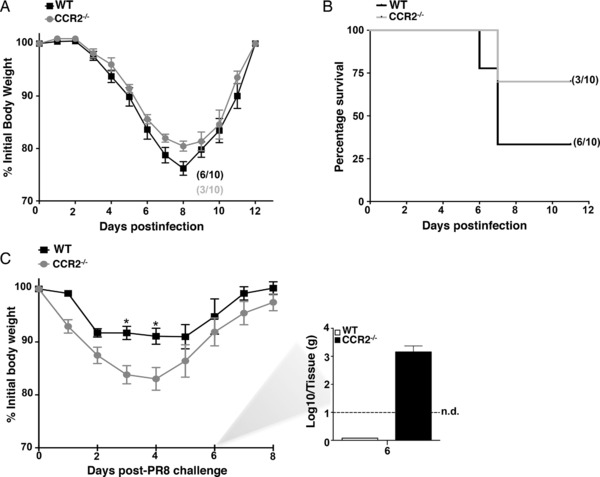Figure 2.

MoDCs confer protection against secondary influenza challenge. (A) WT and CCR2−/− mice (n = 10) were infected intranasally with 500 PFU of PR8 (LD50). Animals were monitored daily for weight loss and clinical signs for up to 12 days. (B) Kaplan–Meier survival curve showing the percentage of mice that survived infection. (C) WT and CCR2−/− animals (n = 10) were infected intranasally with 500 PFU of x‐31 virus. Twenty‐one days after infection mice were challenged with a lethal dose of PR8 (104 PFU). Animals were monitored daily for weight loss and clinical signs for up to 10 days (left panel). Viral titers in the lungs of PR8‐infected mice at 6 dpi were determined by plaque assay (right). (A–C) Results represent n = 10 mice pooled from three independent experiments. Throughout the figure data are shown as mean ± SEM. Asterisks represent statistical significance (*p < 0.05) as assessed by one‐way ANOVA followed by Bonferroni's posttest.
